Revolutionary Archaeology: Entire Roman City Revealed Without Any Digging
Revolutionary Archaeology: Entire Roman City Revealed Without Any Digging
Revolutionary Archaeology: Entire Roman City Revealed Without Any Digging
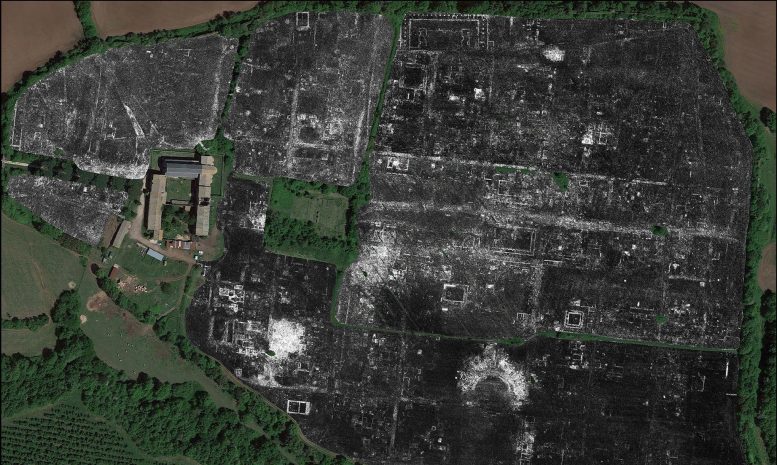
A slice of ground-penetrating radar data from Falerii Novi, revealing the outlines of the town’s buildings. Credit: L. Verdonck
The city rises: Archaeologists have revealed an entire Roman city without any digging. Their approach could revolutionize the study of ancient settlements.
For the first time, a team of archaeologists from the Universities of Cambridge and Ghent, has succeeded in mapping a complete Roman city, Falerii Novi in Italy, using advanced ground-penetrating radar (GPR). The technology has allowed them to reveal astonishing details while the city remains deep underground.
The archaeologists have discovered a bath complex, market, temple, a public monument unlike anything seen before, and even the city’s sprawling network of water pipes. By looking at different depths, they can now study how the town evolved over hundreds of years.
The research, published on June 8, 2020, in Antiquity, harnessed recent advances in GPR technology which make it possible to explore larger areas in higher resolution than ever before. This is likely to have major implications for the study of ancient cities because many cannot be excavated either because they are too large, or because they are trapped under modern structures.
GPR works like regular radar, bouncing radio waves off objects and using the ‘echo’ to build up a picture at different depths. By towing their GPR instruments behind a quad bike, the archaeologists surveyed all 30.5 hectares within the city’s walls – Falerii Novi was just under half the size of Pompeii – taking a reading every 12.5cm.
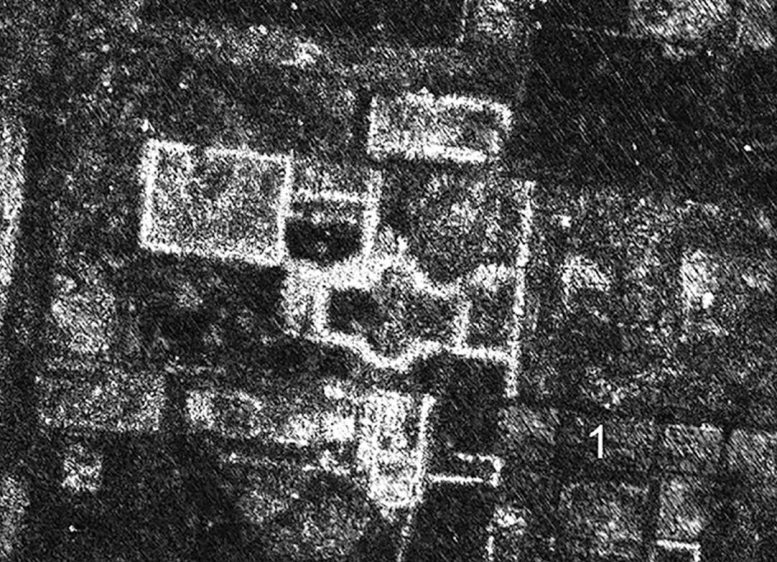
GPR time-slice in the case study area, at an estimated depth of 0.75–0.80m. (1) marks the removal of walls by stone robbing. Credit: L. Verdonck
Located 50 km north of Rome and first occupied in 241 BC, Falerii Novi survived into the medieval period (until around AD 700). The team’s GPR data can now start to reveal some of the physical changes experienced by the city in this time. They have already found evidence of stone robbing.
The study also challenges certain assumptions about Roman urban design, showing that Falerii Novi’s layout was less standardized than many other well-studied towns, like Pompeii. The temple, market building, and bath complex discovered by the team are also more architecturally elaborate than would usually be expected in a small city.

Quad towing GPR array, with team member Dr Lieven Verdonck (Ghent University) on the Falerii Novi site. Credit: Frank Vermeulen
In a southern district, just within the city’s walls, GPR revealed a large rectangular building connected to a series of water pipes which lead to the aqueduct. Remarkably, these pipes can be traced across much of Falerii Novi, running beneath its insulae (city blocks), and not just along its streets, as might normally be expected. The team believes that this structure was an open-air natatio or pool, forming part of a substantial public bathing complex.
Even more unexpectedly, near the city’s north gate, the team identified a pair of large structures facing each other within a porticus duplex (a covered passageway with central row of columns). They know of no direct parallel but believe these were part of an impressive public monument, and contributed to an intriguing sacred landscape on the city’s edge.
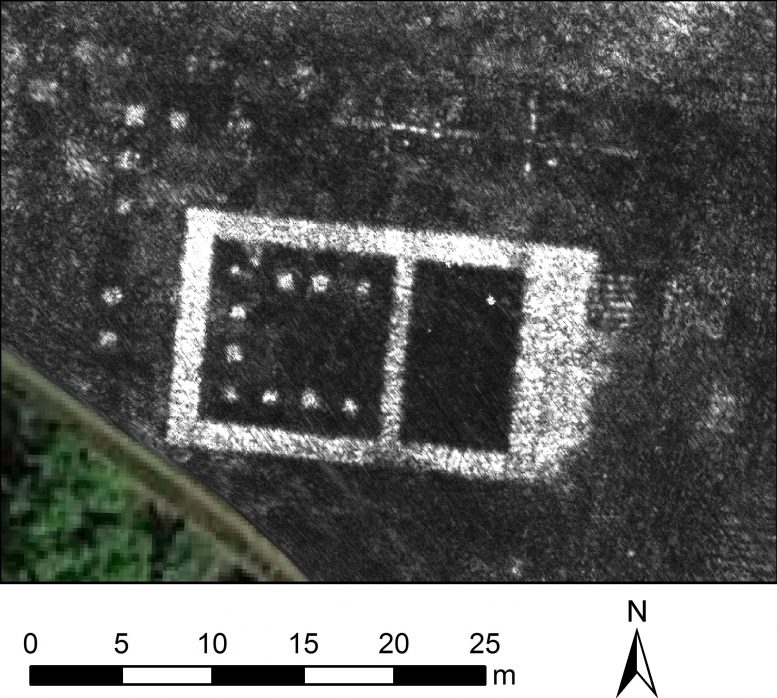
Ground Penetrating Radar map of the newly discovered temple in the Roman city of Falerii Novi, Italy. Credit: L. Verdonck
Corresponding author, Professor Martin Millett from Cambridge’s Faculty of Classics, said:
“The astonishing level of detail which we have achieved at Falerii Novi, and the surprising features that GPR has revealed, suggest that this type of survey could transform the way archaeologists investigate urban sites, as total entities.”
Millett and his colleagues have already used GPR to survey Interamna Lirenas in Italy, and on a lesser scale, Alborough in North Yorkshire, but they now hope to see it deployed on far bigger sites.
“It is exciting and now realistic to imagine GPR being used to survey a major city such as Miletus in Turkey, Nicopolis in Greece or Cyrene in Libya. We still have so much to learn about Roman urban life and this technology should open up unprecedented opportunities for decades to come.” — Martin Millett
The sheer wealth of data produced by such high-resolution mapping does, however, pose significant challenges. Traditional methods of manual data analysis are too time-consuming, requiring around 20 hours to fully document a single hectare. It will be some time before the researchers finish examining Falerii Novi but to speed the process up they are developing new automated techniques.
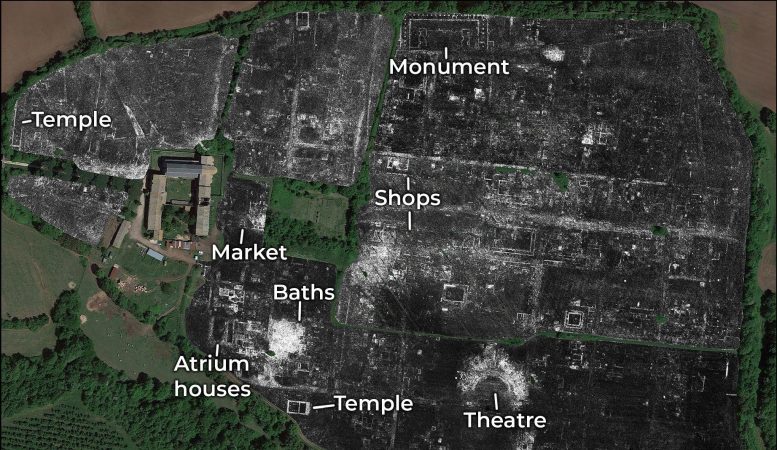
A slice of ground-penetrating radar data from Falerii Novi, revealing the outlines of the town’s buildings. Credit: L. Verdonck
Falerii Novi is well documented in the historical record, is not covered by modern buildings and has been the subject of decades of analysis using other non-invasive techniques, such as magnetometry, but GPR has now revealed a far more complete picture.
MMW
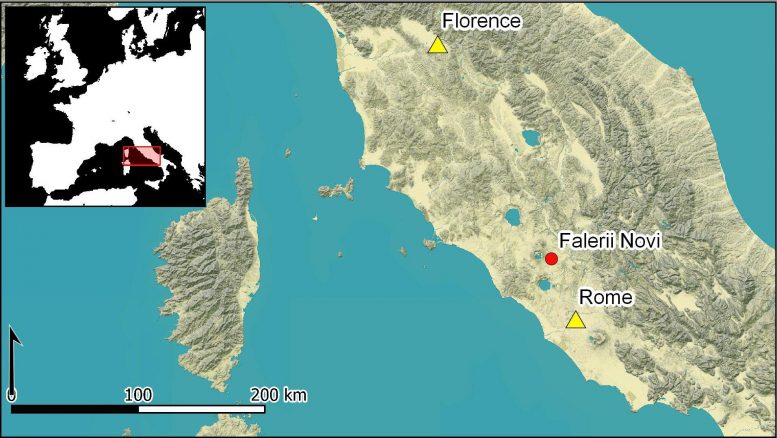


Comments
Post a Comment